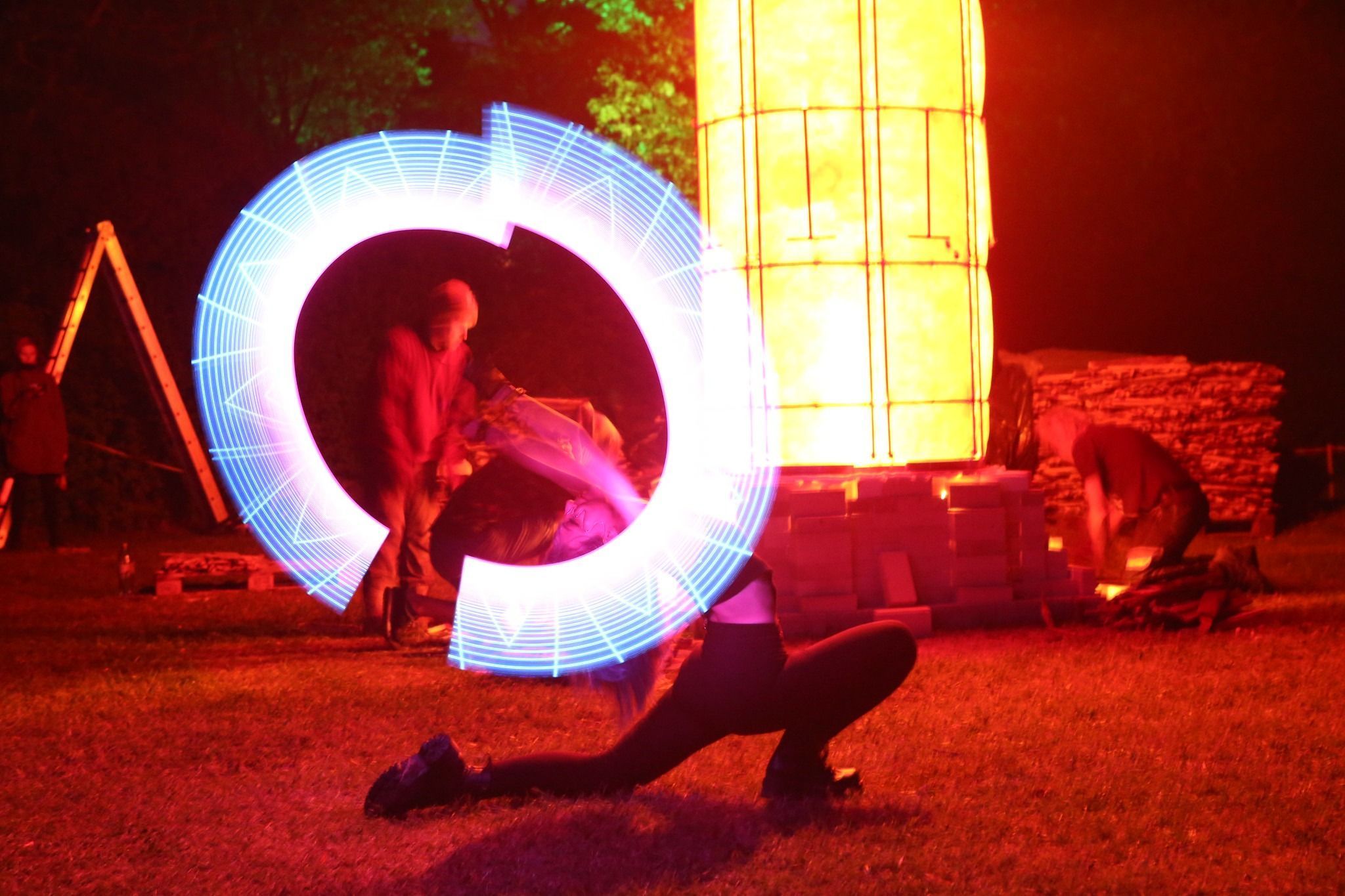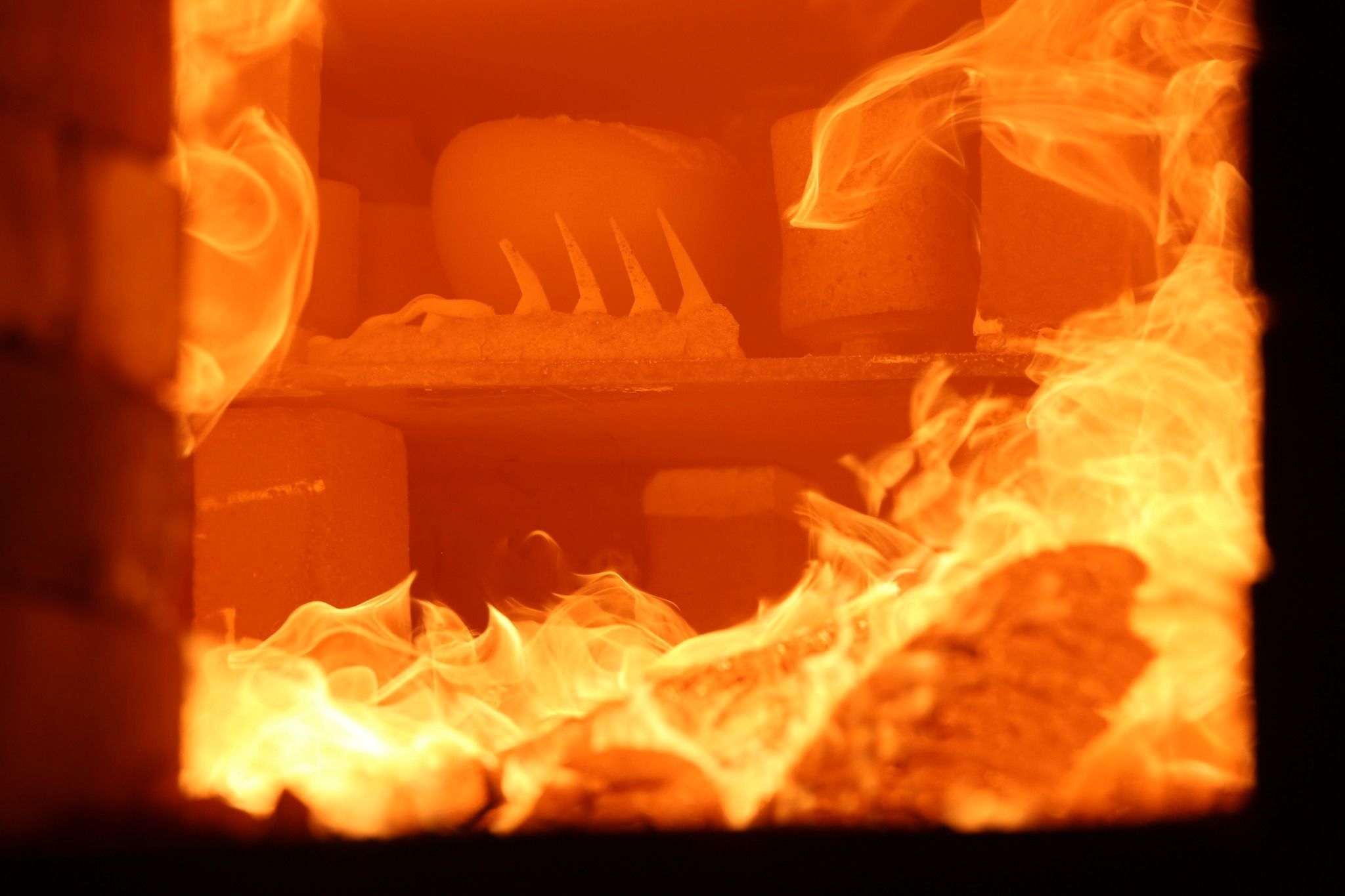The history of Estonia is a history of interruptions. Estonia achieves independence from foreign domination in 1991; in the year 2000 the kiln at Kohila was first fired. This booklet reflects the product of the last five years of that kiln. It can be read as a new symbol of international collaboration and self-determination. Once upon a time progress was only conceived as the ‘new’ – perhaps now a looking to the past of other cultures can settle the country more happily as an important site of art, contemporary craft and creativity in the twenty first century.
The story of twentieth century art is a novella of appropriation. The generations of global exploration had resulted in a world of Empire (and empires) and an assumption of the superiority of the ideology of the oppressor over the dominated. Within Western Europe it was the artists who became aware that the civilizations that had been conquered were not merely a prequel to Christianity; there were qualities in the traditions of Africa and Asia that were equal to if not superior in power and expression to those they lived in. Picasso, Matisse, Gauguin, Van Gogh and many other artists all brought these formerly alien references to their work. The tentacles of British Empire reached out into Asia and Bernard Leach returned to England with a love of Japanese ceramics and became a potter, introducing Europe to a special kind of high-temperature, wood-fired ceramics, and an awareness of the qualities to be found in less sophisticated technologies than those that had conferred superiority on the aggressor. These features are those that can be seen in the anagama kiln used in the symposium at Kohila. Nowadays, progress is not necessarily seen as a relentless development into a future freed from the past; with an awareness of the ‘Slow Movement’ there is now an understanding that there are qualities to be found in simple ways of making and firing that are lost in the safer world of electric kiln firing.
One of the chief of these is rediscovered in wood firing that confers a warmth and subtlety of surface impossible to achieve within an electric kiln. The anagama kiln firing that has produced the work, over a ten year duration, depends for its results on an extended firing that allows the deposition of ash directed onto the carefully placed objects in the path of the flame, exposing the clay surface to much more extreme and some-what unpredictable experiences. ‘Anagama’ is a Japanese word that means a one-chambered kiln, without a separate firebox (which might protect the clay from attack by smoke and flame); this takes us back to an even earlier quality of firing where the flames of the wood fuel directly strike the surface of the clay, instead of being protected from them, leaving marks of their passage through the stack of ware in the kiln.
The kiln is a subtle instrument; a very complex and secret space; we might imagine it as a piano that is forever shut while the performer tries to strike the keys. It is an instrument with one conductor and an orchestra of firing assistants who must learn their roles perfectly answering the demands of the kiln and firing master who plays the kiln to reach a crescendo of heat. The Tohisoo mansion in Kohila, where the symposium takes place is not merely an art venue but also a music school; there is a practice piano in every room. It stands as a symbol of our endeavors.
Firing is an ancient communal work (and play); it can also be read as a collaborative ‘art-attack’ on old and contemporary practices of making art. As a site of creation it can be read as a the place where ancient Cambrian muds are hardened and changed into ceramic through fire, where the surfaces are decorated through the direction of flame, which parallels the invention of narratives through the use of words. It is a wordless language, whose subtlety and directness of expression is only exposed when the kiln door is broken down at the end of the five days of imprisoning.
What happens between the careful and strategic placement of the objects in the kiln and their final removal?
The firing starts with discussion and careful collection of the work into discreet areas to correspond with placement in the tunnel which will later reach astonishing temperatures, approaching white heat. This packing in the kiln requires great knowledge, based on experience and intuition; there are many different effects depending on where the clay is placed and different questions arise: will there be a slight or a great accumulation of fusible ash on the work? Will the clay remain pristine or be profoundly burnt in the heart of the fire? Do we want our work cool or hot? – the kiln can offer this and more. It is only the great depth of experience of the kiln-master, Andres Allik, based on building and firing this kiln and many others, that can secure a felicitous outcome. It is his mind that constructs the physical pack and directs our success or failure. The firing starts early, in the dark hours (which are of course not really black in summer, in Estonia).
It is after midnight, a solitary potter feeding a tiny warming fire, situated under the main fire chamber, with small twigs – enough to caress the ware with gentle heat but not sufficient to keep her warm. A few hairs of smoke escape from the side stoke holes. All is anticipation. She fetches blankets from the store, and passes the watch of the tiny fire to a colleague who sits for a further 3 hours, through break of day. During the next quarter day the fire plods lazily along – we move through the boiling point of water; steam is given off by the clay until it is quite dry and we can progress faster. After nearly a day of firing it is time to increase the team of stokers and we sit about and chat as the pyrometer (reading the temperature within the still dark kiln) increases at a steady rate. Most of the shift is spent in the chairs, talking – of former firings, lives and loves. Stoking embers, raking over coals. It is a ‘site of conviviality’, of talking and of silence. We are making pacts, anticipating outcomes; we are aware that the kiln is waiting to become complicit in our desires, but for now the conversation flies over the surface, alighting on the best clays to use or woods to burn; we are building towards later.
The next night shift is when the kiln begins to become greedy; not yet really demanding, but each new stoking needs to arrive faster than the previous and voices a gentle appreciative roar from the growing fire. The cracks between the bricks glow red in the darkness and we can see that the kiln is reaching another critical temperature: as it reaches red heat, water is driven off once more from the clay – this time not a reversible reaction – this change forces malleable mud to the stony rock that is ceramic – as the water of crystallisation is vaporised. At 600 degrees Centigrade the kiln is gurgling contentedly; no longer, though, are we trying to ignite small sticks but we are trying to satisfy a growing appetite. But we must advance through this transition carefully, as too much speed can cause the steam trapped in thick clay to produce catastrophic explosions. The kiln now demands a steady rhythm. Three of us stoking – one to each stoking position, throwing the wood in diagonally and one to open the door to the now fearsome fire. The door is quickly closed, locking in the inferno. Leave the door temporarily ajar to allow oxygen to access the kiln. Close the door tightly to create reduction effecting subtle colour changes in the oxides in the glazes and within the clay. Maintain temperature; re-open the door; check the ‘cones’ measuring the ‘heat-work’ deep in the kiln. A haze of heat rises above the kiln, causing the view to the trees above the kiln to vibrate – to dance.
We wait silent now for the next command. The door is re-opened faces are illuminated by an orange searchlight; we stoke again. We are transfixed by the regularity, even the monotony of the actions; we are totally present to the needs of kiln master/conductor and of the kiln. Our changing orchestra of firers must now maintain its constant steady exhalation of wood energy to hold temperature; to play this steady ululation of heat. Each quartet of players must re-feel the beat of the kiln, re-experience and know its deep insistence. The kiln is a woman; nurturing, gestating its precious cargo, waiting for parturition. She has a greedy, even cruel, appetite.
The last shift takes up position; all are swathed in cloths to protect faces from the extreme heat. Wood is stoked from the front; wood goes through the side stokes; more bundles are collected; the pace is relentless and exhausting. Eventually enough embers have accumulated for the firing to be stopped. Suddenly all falls silent. The kiln is left to cool for days while the ceramics adjust to their new state, in pools of ash.
Finally the kiln has cooled sufficiently to remove the ware. The pieces are pulled greedily from the kiln; too hot to handle without leather gloves – work is examined for felicitous effects, for absence of cracks – for proof that it has survived this rite of passage. At last the objects can be shown in the exhibition, cold – their secret life at such extremes of temperature only revealed in the painting that the flame has left across the surface of the ceramic, and in the melting of glaze.
Estonia is an ancient country with a young history of freedom to choose and identify its own destinies. The ceramic symposium, located in Kohila, is testament to a new openness to contemporary art forms, and means of expression; these have developed out of ancient, sometimes alien craft practices and which can be appropriated as part of this globalized experience of contemporary art and ceramics. Like the ancient erratic boulders, from a quite other geological world, deposited on the north coast of Estonia by the retreating glaciers in the last Ice Age, this new practice of anagama firing, perhaps finding a kinship with the ancient pagan religions, stands out in the contemporary craft and art landscape.
David Jones is an artist and writer. He is a member of the International Academy of Ceramics and the Craft Potter Association of the UK. He teaches in the BA and MFA courses in Applied Arts at the University of Wolverhampton. He is the author of Raku – Investigations into Fire, and Firing – Philosophies within Contemporary Ceramic Practice (both published by Crowood Press).





